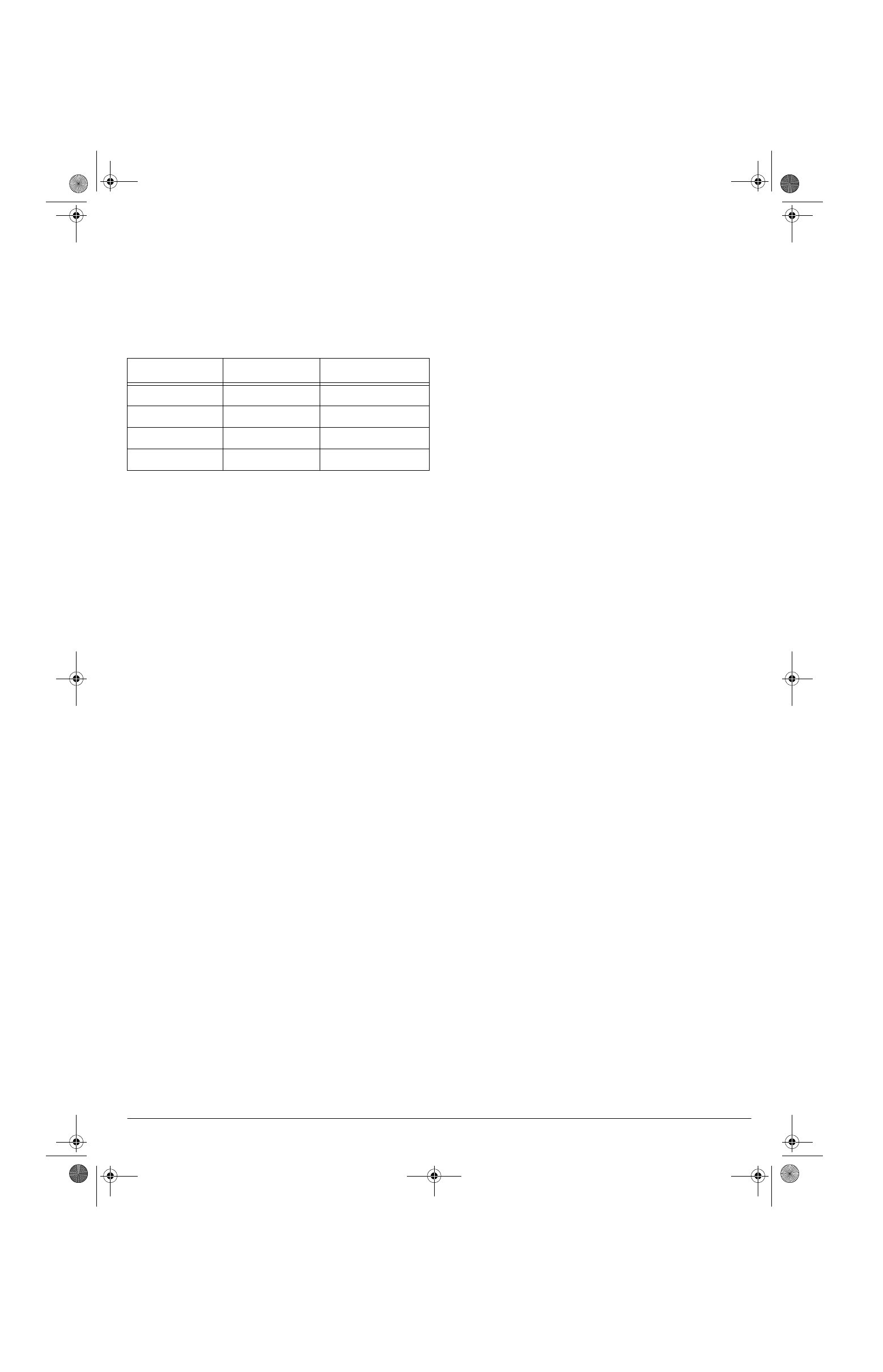
13Installation
Setting the Keypad’s Address
Note:
If you connect only the supplied remote keypad to the
alarm center, you do not need to set the keypad’s address.
If you connect remote keypad(s) other than the supplied
one, you must set the switches on the back of each keypad
to assign it a unique address.
Set the switches for each remote keypad as follows:
CONNECTING SENSORS INTO LOOPS
After you install all sensors in the locations you noted in your
floor plan, you can connect your alarm system’s sensors to-
gether into the three types of loops.
Delayed Loop (Zone)
— Causes the alarm center to sound
the alarm after a preset period of time when a sensor with
the loop is activated, if the alarm system is armed. You can
have separate groupings of normally-open and normally-
closed sensors within this type of loop.
Instant Loop (Zone)
— Causes the alarm center to sound
the alarm instantly when a sensor within the loop is activat-
ed, if the alarm system is armed. You can have separate
groupings of normally open and normally-closed sensors
within this type of loop.
Panic/Tamper Loop (Zone)
— Causes the alarm center to
sound the alarm instantly when a sensor within the loop is
activated, even if the alarm system is not armed. You can
only have a group of normally-open sensors within this type
of loop.
To make a loop of normally-closed sensors, you must con-
nect them in series. This means you cut one of the conduc-
tors and connect the sensor in line with that conductor.
To make a loop of normally-open sensors, you must connect
them in parallel. This means you connect both conductors to
each sensor along the loop.
Note:
When you connect sensors to the loops, make sure all
of the sensors within each group are either normally-open or
normally-closed. You cannot mix different types of sensors
within the same group.
Connecting Loops of Sensors to the Alarm
Center
After you have connected all sensors noted in your floor plan
in loops, route the ends of each loop of sensors to the alarm
center’s location.
Note:
To make it easier to connect the loops of sensors to
the alarm center, use tape you can write on to mark the end
of each loop’s wire pair with its zone type and if the connect-
ed sensors are normally-open or normally-closed.
After you route the wires for each loop to the alarm center,
follow these steps to connect the wires to the alarm center.
1. Use a screwdriver to knock off one of the plugs on the
alarm center’s case.
2. Route each loop’s wires through the plug’s hole.
3. Use a screwdriver to remove the jumpers between Ter-
minals 2 and 3 and Terminals 3 and 4.
Note:
Save these jumpers. You might have to re-install
them after you connect the loops.
4. Strip about
1
/
4
inch of insulation from the end of each
wire.
5. Use a screwdriver to connect each loop’s wires to the
alarm center as follows.
Note:
Do not connect more than two wires to a single
terminal. If there are more than two wires to connect to a
terminal, first connect the wires to an external barrier
strip, then connect a single wire from the barrier strip to
the terminal.
•
Delayed Zone (Terminals 1, 2, and 3) —
If you con-
nected normally-open sensors to this loop, connect
the loop’s wires to Terminals 1 and 3. If you con-
nected normally-closed sensors to this loop, connect
the loop’s wires to Terminals 2 and 3.
•
Instant Zone (Terminals 3, 4, and 5)
— If you con-
nected normally-open sensors to this loop, connect
the loop’s wires to Terminals 5 and 3. If you con-
nected normally-closed sensors to this loop, connect
the loop’s wires to Terminals 4 and 3.
Note:
Terminal 3 provides grounding for the Instant and
Delayed Zone’s loops. One wire of both normally-open
and normally-closed loops of sensors is connected to
Terminal 3.
•
Panic/Tamper Zone (Terminals 6 and 7)
— Connect
the panic/tamper loop’s wires to Terminals 6 and 7.
Jumpers on Normally-Closed Terminals
Both of your alarm center’s normally-closed loops must have
a complete circuit (one of the supplied metal jumpers or a
loop of normally-closed sensors) before the system will arm.
Your alarm center comes with two metal jumpers for your
alarm system’s normally-closed loops.
Depending on your installation, follow these instructions to
install the jumpers.
•
If you did not install any normally-closed loops of sen-
sors,
install one jumper between Terminals 2 and 3, then
install the other jumper between Terminals 3 and 4.
•
If you installed a normally-closed loop of sensors only in
the Delayed Zone,
install a jumper only between Termi-
nals 3 and 4.
Keypad Number Address 1 Address 2
1Off Off
2On Off
3Off On
4On On
49-454.fm Page 13 Wednesday, January 17, 2001 10:37 AM


















